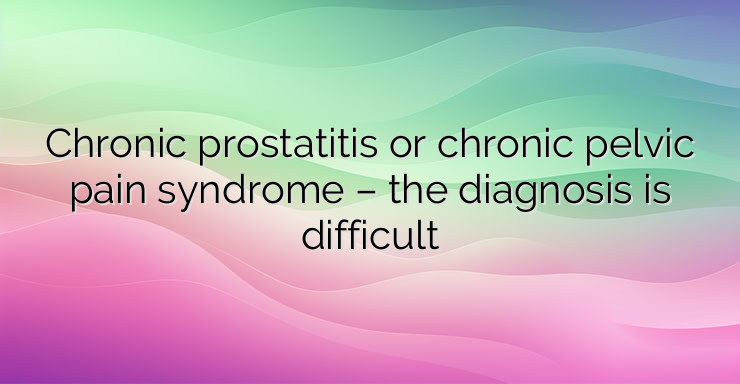Prostatitis (inflammation of the prostate gland) occurs in a large percentage of patients in all age groups. According to the NIH classification, the following groups of prostatitis are distinguished: I-acute bacterial prostatitis, II- chronic bacterial prostatitis, III-chronic prostate/chronic pelvic pain syndrome, which in turn is III a-inflammatory and III b-non-inflammatory, IV-asymptomatic inflammatory prostatitis. Chronic prostatitis (chronic pelvic pain syndrome) accounts for 90% of symptomatic prostatitis and has a complex and heterogeneous etiology. It is a disease combining various forms of inflammatory process in the prostate gland with all the diversity of clinical presentation. It is gaining increasing medico-social importance, mainly due to the fact that it affects men of active sexual and reproductive age. The diagnosis is difficult due to heterogeneity or scarcity of symptoms. Prolonged cases, which remain unrecognized for a long time due to ignorance of the symptoms, can lead to disturbances in sexual and reproductive function. These disturbances are expressed in difficult arousal, weak, sluggish erection, rapid ejaculation. Abnormalities in the spermogram are also observed – low motility, reduced number and morphological changes of spermatozoa. Due to the fact that everything listed here disturbs the quality of life, timely diagnosis and adequate treatment of chronic prostatitis is important. It is caused by various infectious and non-infectious agents and is characterized by a rather long and relapsing clinical course. Clinically, several groups of symptoms can be differentiated: chronic pelvic pain lasting more than 3 months, dysuric complaints, and disturbances in sexual and reproductive functions. The pain syndrome is localized at the base of the penis, but the pain may radiate to the scrotum or the anus area. A single complaint of heaviness in the perianal area may be present. Erectile dysfunction is expressed in difficult arousal, rapid ejaculation, pain during ejaculation. Dysuric complaints are mainly related to pain during urination and leakage of secretion from the urethra, which is also part of the possible symptoms. The diagnosis is made with a detailed history, microbiological examination of urine and ejaculate, separated immediately after the act of urination. Deviations in the spermogram are almost always detected in protracted cases, which is why it is examined in all patients during the diagnosis. A kidney-ureter-bladder (KUR) scan is performed to detect calculi in the prostate gland. The amount of zinc in the ejaculate, which is significantly reduced in the course of an inflammatory process, is also examined. In the absence of evidence of a microbiological agent, it is appropriate to conduct a serological test to rule out chlamydial infection, as well as an immunological test. In rarer cases, an aspiration biopsy of the prostate gland is required. the material,which is collected is sent for microbiological diagnosis and cytological examination. Treatment of the disease is difficult due to the specific anatomical and functional characteristics of the prostate gland. Sometimes it is very long and requires patience on the part of the patient. The treatment is complex and includes antibiotic therapy, anti-inflammatory drugs with local action that reduce pain and inhibit the activation and function of neutrophils. Alpha-blockers provide significant relief of obstructive and irritative symptoms in prostatitis, especially with long-term use. Physical therapy using electromagnetic therapy, transrectal microwave hyperthermia (TRMH), and extracorporeal shock wave therapy are also considered. As a last resort, prostatectomy is the last resort in treatment-resistant patients in whom conservative therapy has failed. Patients with prostatitis type IIIb remain the most difficult to treat. In these, alpha-blockers, analgesics, muscle relaxants, and tricyclic antidepressants used concurrently may provide relief of symptoms. References: National library of medicine – Chronic prostatitis: Current concepts Prostate cancer and prostate disease – Low quality of life in men with chronic prostatitis-like symptoms Urology – Prof. Dr. P. Panchev


Leave a Reply